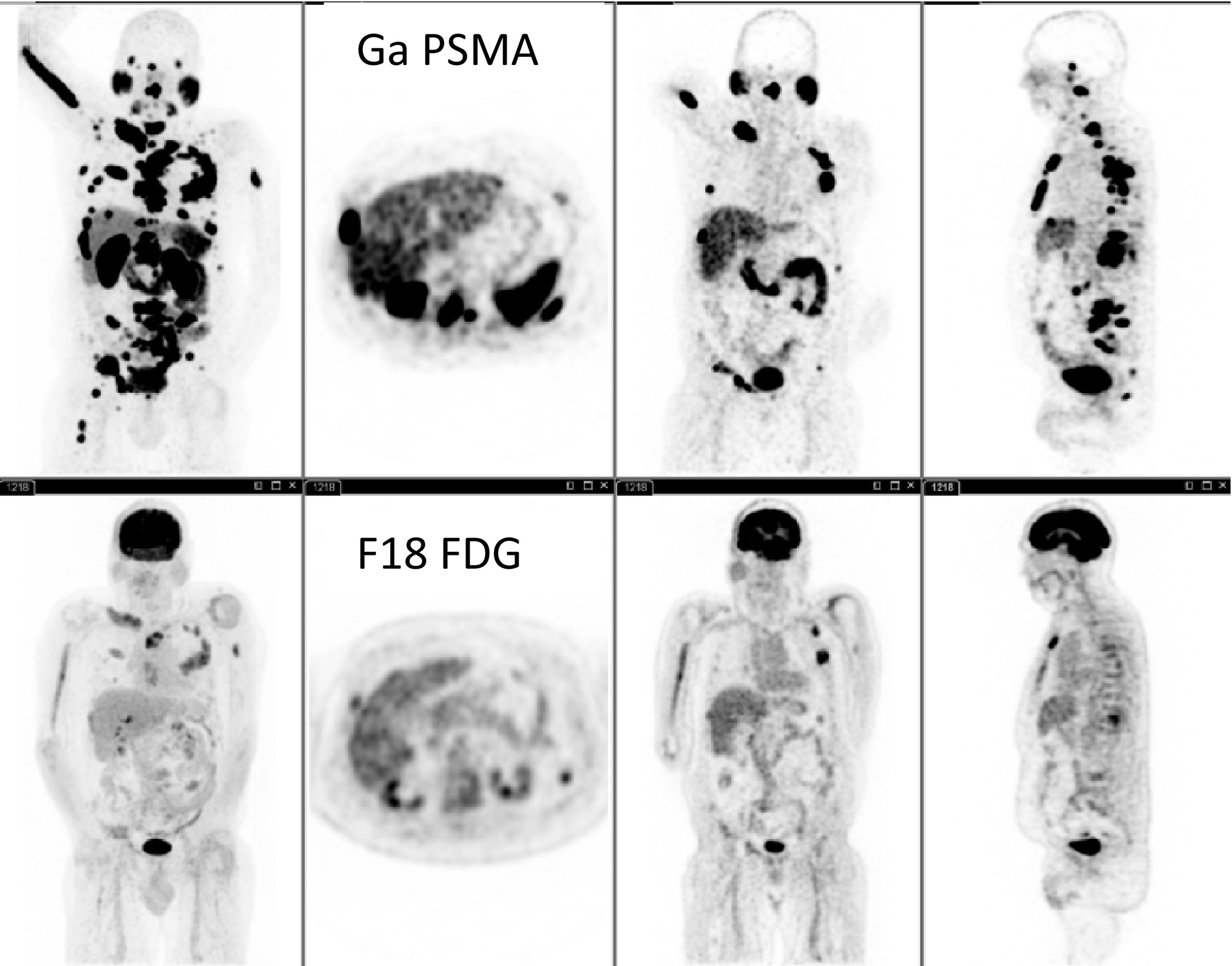Theranostic treatment for advanced prostate cancer
177Lutetium PSMA therapy



Content under development Theranostic treatment for prostate cancer
Theranostics is a medical approach that separates people into different groups, with medical interventions being tailored to the individual patient based on their predicted response. The terms personalized medicine, precision medicine, stratified medicine, and theranostics are often used interchangeably to describe this approach. In the case of advanced prostate cancer, that is cancer that has metastasised and spread to other parts of the body, often the bones, the term refers to 177Lutetium PSMA therapy, or Prostate-Specific Membrane Antigen therapy. This therapy is usually offered if other therapies, namely hormone and chemotherapy have failed. It is also called advanced metastatic castration resistant prostate cancer. The objective is to relieve the systems associated with advanced prostate cancer rather than be a complete cure. The therapy helps:
- Reduce the size of the tumour(s) and stop them growing
- Improve symptoms
- Maintain and improve quality of life
Post treatment, some patients have a long period of remission and significant improvements in their quality of life, but it is not a cure.
How does 177Lutetium PSMA therapy work?
PSMA (Prostate Specific Membrane Antigen) is a protein on the surface cells in the prostate gland. Prostate cancer cells, express more PSMA than normal cells. Further, If the prostate cancer cells have spread to other parts of the body (metastasised), PSMA will also be present. 177Lutetium PSMA therapy uses a molecule which attaches itself to the PSMA receptors on the cancer cells. Before it’s given to you, the PSMA molecule is bound with 177Lutetium. This is a radioactive substance. It damages and destroys prostate cancer cells in a targeted way, with minimal damage to healthy cells. The PSMA molecule carries the 177Lutetium straight to the tumour site so your whole body isn’t exposed to radiation.
How is177Lutetium PSMA therapy administered?
177Lutetium PSMA is injected into a vein, travels through the blood stream and attaches itself to prostate cancer cells both in the prostate and other sites. This followed by a PET/CT scan. The radioactive material now attached to the cancer cells ‘lights up’ on the scan and shows the location and size of cancer lesions. Follow the link for more information on PET CT scans. This information is used the stage the cancer and plan treatment. Once planned, treatment, further 177Lutetium PSMA, is delivered over 4 hours via a drip inserted in a vein as an outpatient procedure.

Prostate matters is a not for profit organisation that is committed to providing free expert advice about prostate issues from leading Clinical Authorities
PROSTATE MATTERS
FOLLOW US
Copyright Disclaimer: We try to acknowledge copyright as appropriate. If we have used something without acknowledging copyright, this is inadvertent. Please let us know by emailing info@prostatematters.co.uk



